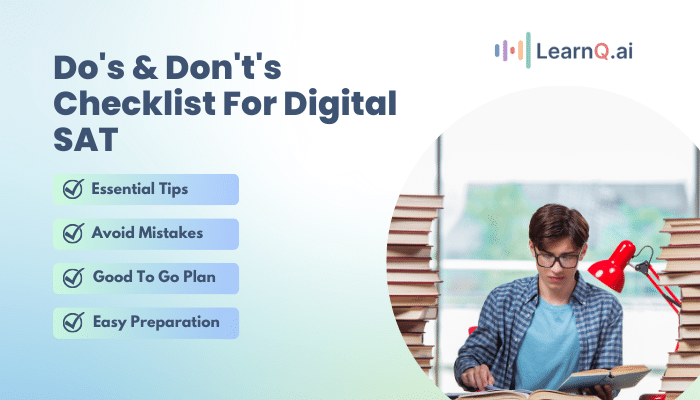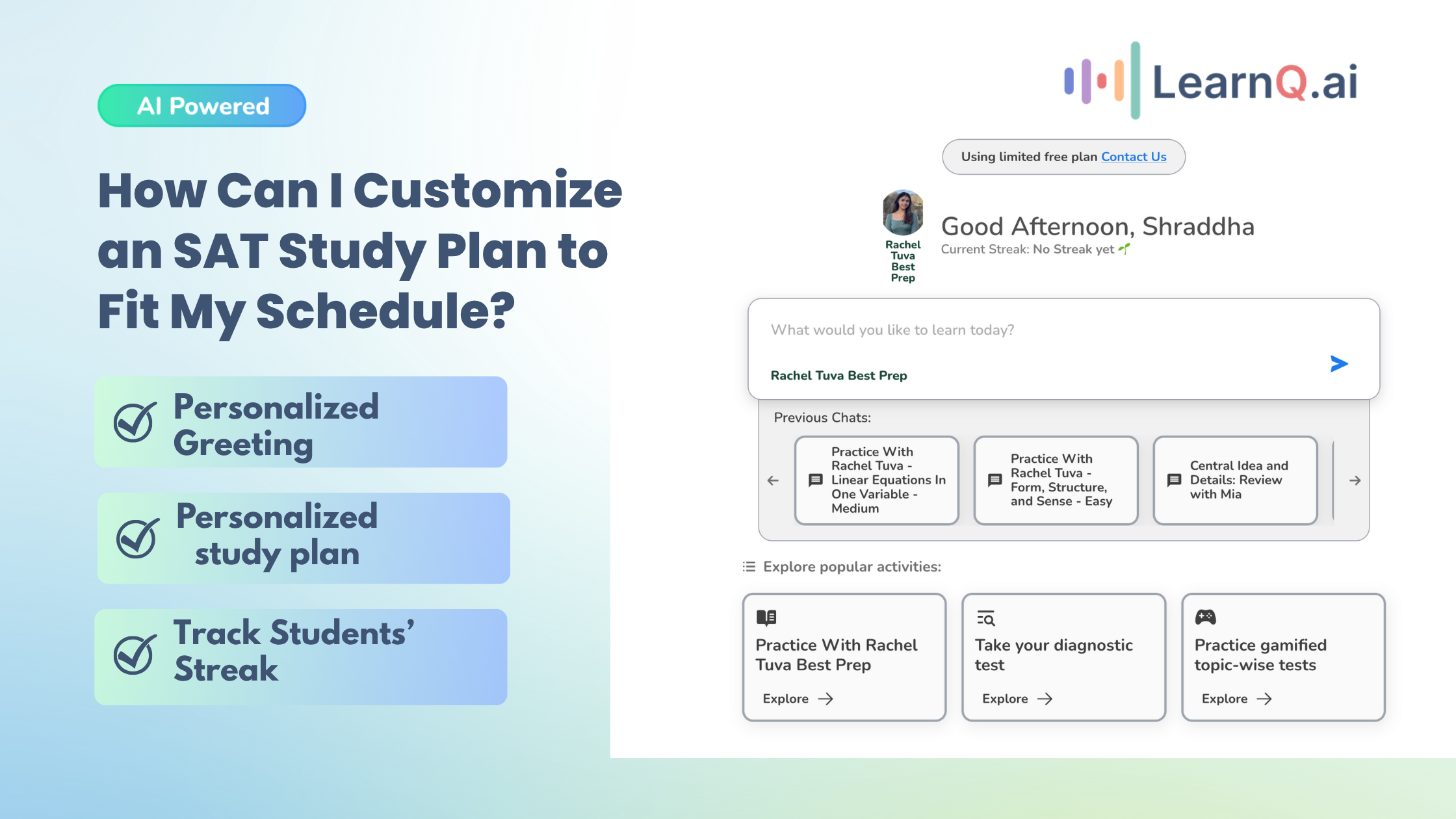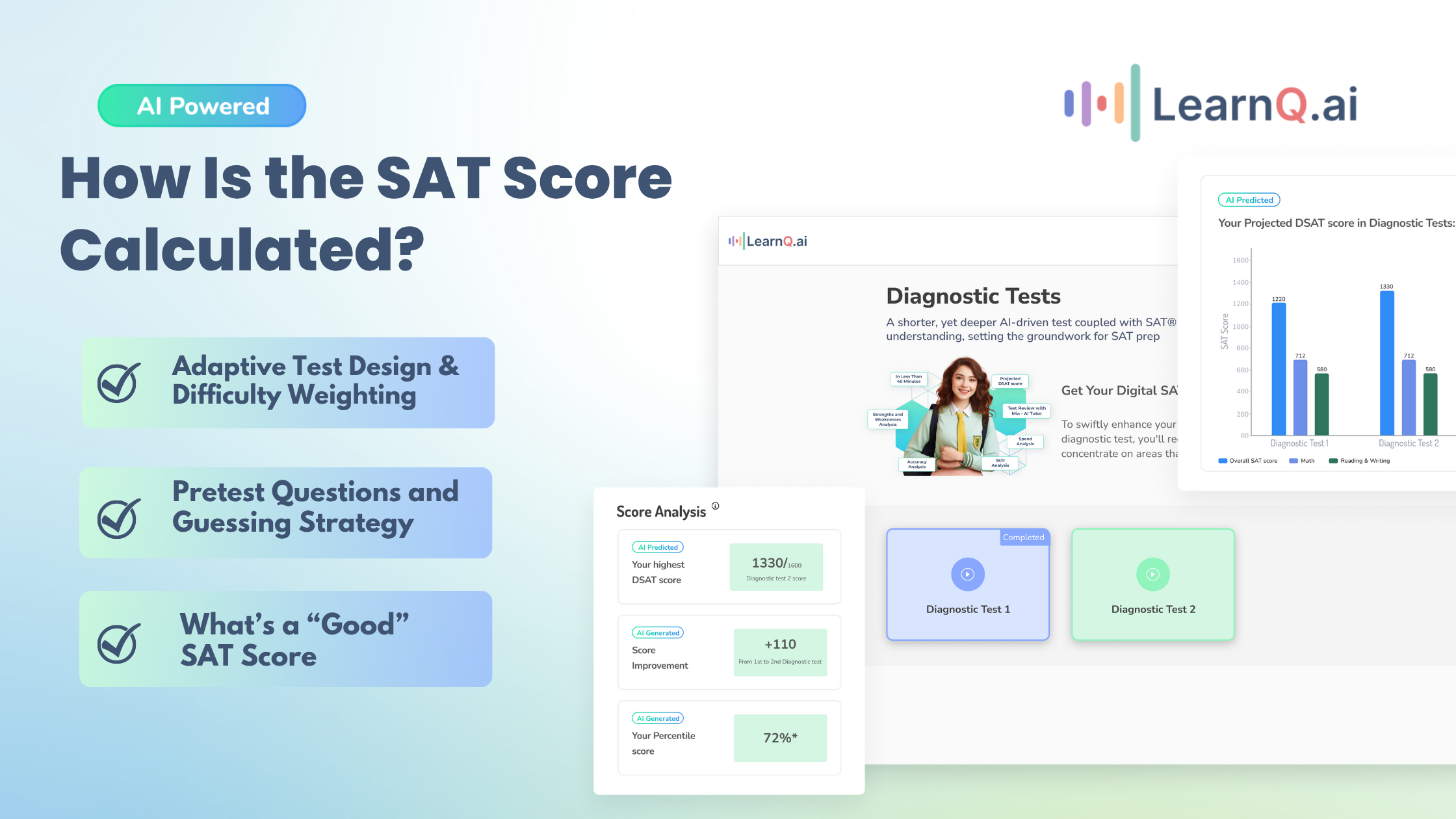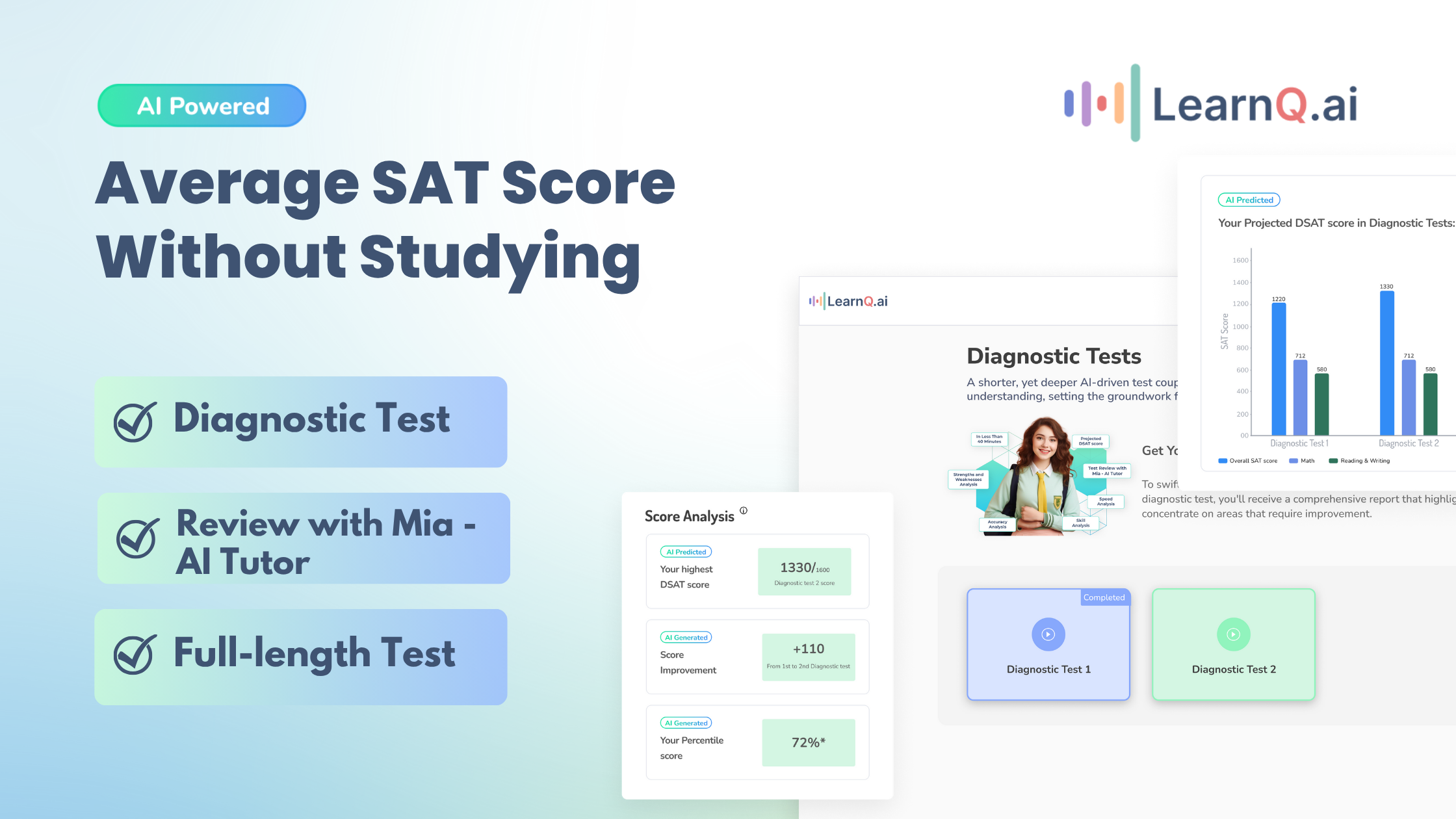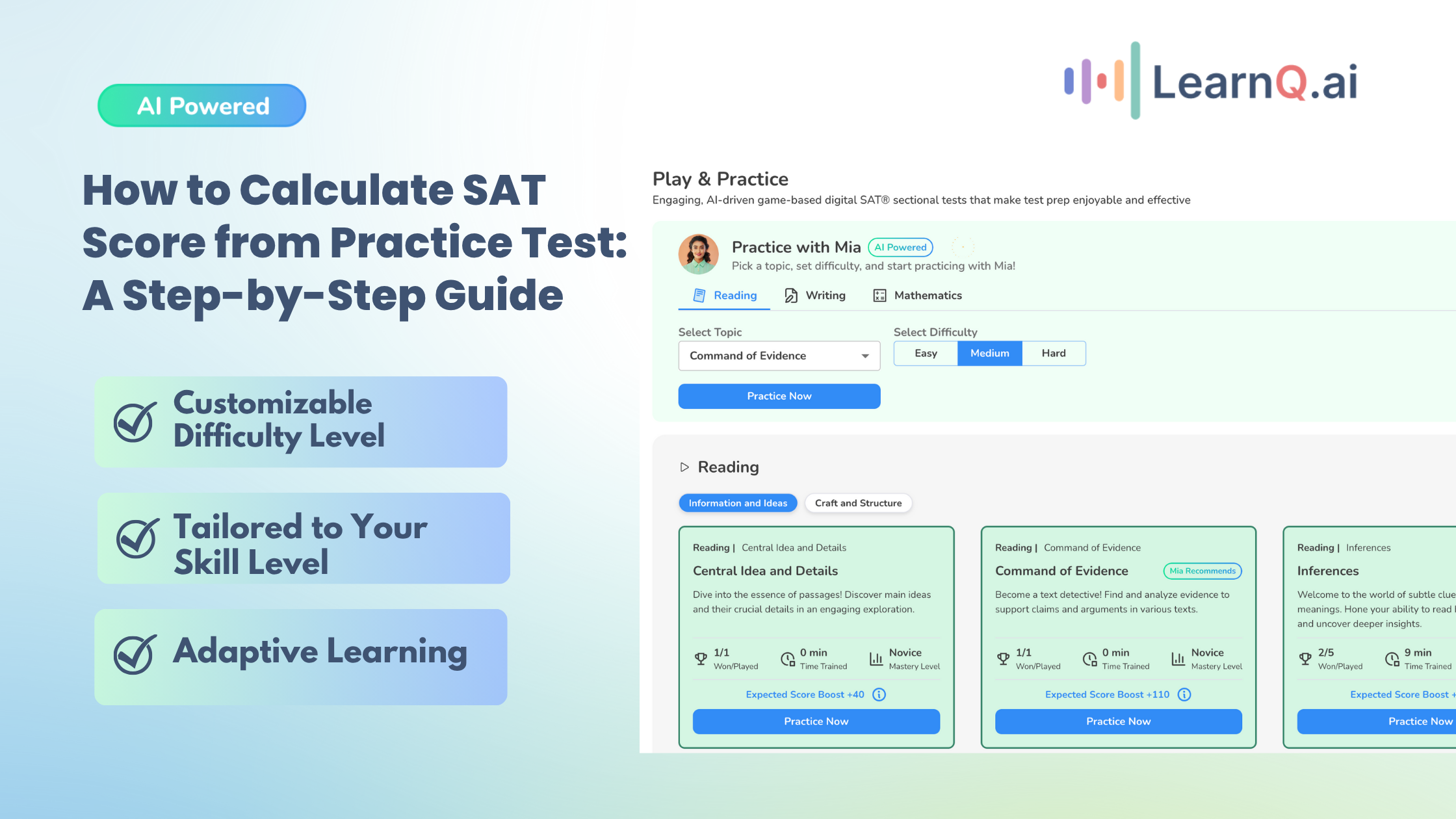The transition to the digital SAT represents a significant milestone in standardized testing, aiming to enhance accessibility, efficiency, and the overall test-taking experience.
As we navigate through this new digital landscape, understanding the format, rules, and tools involved becomes crucial for both educators and students.
This introduction will provide you with a comprehensive overview of the digital SAT, underscoring the importance of a Digital SAT Checklist to ensure you’re fully prepared for every aspect of the exam.
We’ll delve into the exam’s format, highlight why familiarizing yourself with its rules is vital, and offer an introduction to the Bluebook application, the official platform for the digital SAT. This checklist is your gateway to mastering the digital SAT’s nuances, ensuring a seamless and successful test-taking experience.
Before we break down the checklist that will pave your way to acing the digital SAT checklist, let’s take a closer look at exactly what you’re up against with this new format.
Overview of the Digital SAT Format
The digital SAT has been designed to reflect the evolving needs of the educational landscape, incorporating technology to streamline the testing process while maintaining the rigor and integrity of the SAT. The test is administered on a computer, offering a more personalized and adaptive testing experience. Here’s what you need to know about the format:
- Adaptive Testing Approach: The digital SAT utilizes an adaptive testing model, where the difficulty level of questions can adjust based on the test taker’s performance. This approach aims to accurately assess a student’s capabilities in reading, writing, and math.
- Section Timing and Structure: While the core components of the SAT remain, the digital format introduces changes in timing and the number of questions, designed to optimize the test duration without compromising its comprehensiveness.
- Accessibility Features: The digital format includes built-in accessibility features, ensuring that all students, including those with disabilities, can navigate the test effectively.
The digital SAT includes built-in accessibility features to accommodate students with disabilities, such as:
- Screen Reading Software Compatibility: For visually impaired or blind test-takers.
- Text and Background Color Adjustments: To aid students with visual impairments or dyslexia.
- Zoom and Magnification Tools: For test-takers who require enlarged text or images.
- Keyboard Navigation: Allowing students with limited mobility to navigate through the test without a mouse.
- Voice Recognition Software Compatibility: Assists students who cannot type or write manually.
Understanding the digital SAT format is the first step towards successful test preparation, offering insights into what to expect and how to strategize your study plan.
Now that you’ve got a good grasp on the digital SAT’s layout, let’s dive into the nuts and bolts of the testing rules and requirements because knowing what’s expected of you is half the battle.
Importance of Understanding the Testing Rules and Requirements
Familiarity with the testing rules and requirements is paramount in ensuring a smooth and stress-free test day. Here’s why understanding these guidelines matters:
- Test Integrity: The College Board has implemented rules to maintain the fairness and integrity of the SAT. Violations can result in score cancellations or other penalties.
- Preparedness: Knowing what is expected on test day, including what items are permitted and how breaks are structured, can alleviate anxiety and allow test-takers to focus on their performance. For this, you might want to sharpen your schools with a rigorous prep, in which LearnQ.ai can be very beneficial.
- Accommodations: For students requiring accommodations, understanding the process for requesting these and how they are implemented in the digital format is critical for accessing necessary support.
Compliance with the SAT’s testing policies ensures that all students have a fair opportunity to showcase their abilities and achieve their best possible scores.
With the rules of the game laid out, it’s time to introduce you to your main player on test day: the Bluebook application.
Also Read: Top SAT Prep Books To Improve Score
Brief on Bluebook as the Official Testing Application
The Bluebook application is at the heart of the digital SAT experience, serving as the official platform through which the test is administered. Here’s a brief overview:
- Accessibility and Convenience: Bluebook is designed to be intuitive and user-friendly, ensuring that students can navigate the test confidently.
- Security and Fairness: The application incorporates advanced security features to protect the integrity of the test, providing a level playing field for all test-takers.
- Preparation Tools: Bluebook offers practice tests and preparation resources, allowing students to familiarize themselves with the digital format before test day.
Familiarity with Bluebook is essential for anyone taking the digital SAT, as it not only serves as the medium for the test but also offers valuable resources for preparation.
Alright, let’s shift gears and get down to the nitty-gritty: your digital SAT preparation checklist. This is where the rubber meets the road in your test prep journey.
Digital SAT Preparation Checklist
Preparing for the digital SAT involves a comprehensive approach that extends beyond traditional study methods.
Alongside reviewing math formulas and honing your reading comprehension skills, gaining familiarity with the technology and software integral to this new format is essential.
To guide you through this multifaceted preparation process, we’ve developed a Digital SAT Checklist. This checklist serves as a step-by-step guide, ensuring that every aspect of your preparation aligns with the demands of the digital SAT.
Whether it’s mastering the content or navigating the Bluebook app with ease, the Digital SAT Checklist is your roadmap to confidence and success on test day. Let’s dive into the essentials;
LearnQ.ai is Powered by VEGA AI—Is your Institute Next?
Give students a Duolingo-style test-prep platform with Shopify-level customization for tutors and institutes.
Secure a Compatible Personal Testing Device (Excluding Chromebooks and Cell Phones)
The first step in your digital SAT preparation should be to secure a compatible device for the test. Here’s what to consider:
- Device Compatibility: Ensure your device meets the College Board’s requirements. Most modern laptops and tablets are acceptable, but Chromebooks and cell phones are not permitted during the exam. The College Board has approved the following digital devices, software, and storage space for student use on the digital SAT.
| Device Type | Operating System | Minimum Storage Space (per exam) |
| Windows Laptop/Tablet | Windows 10 or 11 (excluding Windows 10 in S mode and Windows 11 SE) | 250 MB |
| Apple Mac Laptop | Mac OS 11.4 or later | 150 MB |
| Apple iPad | iPad OS 14 or later (excluding 17.0.0-17.0.3) | 150 MB |
| Chromebook (School-managed only) | Chrome OS 83 or later | 150 MB |
What if you do not have an approved device?
If you don’t have an approved device for the digital SAT, you have several options to ensure you can still take the test:
- School-Issued Devices: Many schools offer devices for students to use for educational purposes, including taking standardized tests like the digital SAT. Check with your school to see if they can provide a device for the test day.
- Borrow a Device: Consider borrowing a compatible device from a friend or family member. Ensure the device meets the College Board’s specifications for the digital SAT.
- College Board’s Device Loan Program: The College Board has a program to loan devices to students who do not have access to an approved device. You should contact the College Board well in advance of your test date to request a device through this program.
- Test Center Devices: Some test centers may have devices available for test-takers to use. Availability can vary, so it’s important to check with your test center or the College Board directly.
- Contact the College Board: If you’re facing difficulties in securing a device, reach out to the College Board for guidance. They can provide information on resources and support to help you take your digital SAT.
- Performance Check: Verify that your device is in good working condition, with reliable battery life and sufficient processing speed to run the test software smoothly.
- Backup Plan: Consider having a backup device ready, if possible. This ensures you’re prepared in case of any technical difficulties with your primary device on test day.
Got your device sorted? Great – that’s step one. Next up, let’s make sure you’re a whiz at using the Bluebook’s built-in tools. After all, a carpenter is only as good as his understanding of his tools.
Practice Using Tools Embedded Within Bluebook
The Bluebook application includes various tools and features designed to aid you during the test. Familiarizing yourself with these tools before test day is crucial:
- Navigation Features: Learn how to navigate through the test sections, flag questions for review, and submit your answers.
- On-Screen Calculator: Practice using the on-screen calculator for the math section to ensure you’re comfortable with its functionality.
- Accessibility Features: Explore any accessibility features you plan to use, such as text-to-speech or screen magnification, to ensure they meet your needs.
The table below offers a succinct summary of the tools and navigation functionalities accessible in the Bluebook app. Explore and familiarize yourself with these features through practice tests on learnQ.ai.
Want to know more about the tools and features of DSAT? Click here!
Complete Exam Setup in Bluebook Ahead of Test Day
Setting up your exam in Bluebook before test day can help alleviate stress and prevent last-minute issues. Here’s what this entails:
- Software Installation: Download and install the Bluebook application on your testing device well in advance. You can download it from the College Board’s official website.
- Test Registration: Enter your registration details into Bluebook to ensure your test is correctly set up and ready to go.
- Pre-Test Check: Perform any recommended pre-test checks or updates to the Bluebook software to avoid technical glitches during the exam.
Understand and Review the Testing Accommodations If Applicable
If you’ve been granted testing accommodations, understanding how they will be implemented in the digital format is crucial:
- Review Your Accommodations: Confirm the specifics of your accommodations, such as extended time, breaks, or the use of assistive technology.
- Practice with Accommodations: If possible, use the practice tests in Bluebook to familiarize yourself with taking the test under your accommodation conditions.
- Communicate with Test Administrators: Ensure any questions or concerns about your accommodations are addressed well before test day.
What to Bring on Test Day?
Since we have covered the upper funnel of the Digital SAT checklist, let’s navigate to the end of the funnel. As the digital SAT day approaches, being well-prepared is more than just studying the material; it’s also about knowing exactly what to bring to the testing center. This guide will help you pack your bag with all the essentials, recommend some optional items for added comfort and efficiency, and remind you of what to leave at home to avoid any testing day mishaps.
Mandatory Items: Admission Ticket, Photo ID, Approved Devices
Before you head out the door, make sure you have these non-negotiable items. Without them, you won’t be able to take your test.
- Admission Ticket: Print out your admission ticket from the College Board website. This ticket is your entry pass to the testing center and contains vital information including your test center location and testing time.
- Photo ID: Bring an official photo ID that matches the name you used to register for the SAT. Acceptable IDs include a driver’s license, passport, or school ID. Ensure it’s current and has a recognizable photo.
- Approved Devices: Since the digital SAT requires an electronic device, ensure you bring an approved laptop or tablet that meets the College Board’s specifications. Remember, Chromebooks and cell phones are not allowed for taking the test.
Note: Kindly refer to the official College Board’s website for any updates.
Got all your mandatory gear in check? Cool. Now, let’s talk about some optional extras that could boost your comfort and efficiency on the big day.
Optional but Recommended Items for Comfort and Efficiency
To make your testing experience as comfortable and efficient as possible, consider packing these optional items:
- Water Bottle: Staying hydrated can help keep your mind sharp. Bring a clear water bottle to place at your feet or in a designated area as per the test center’s rules.
- Snacks: Pack some light, non-disruptive snacks for your scheduled breaks. Nutritious options like granola bars or fruit can help maintain your energy levels.
- Extra Pencils and Erasers: Even though the SAT is digital, you might want to jot down notes or calculations. Having a pencil and an eraser at hand can be very useful.
- Watch (without an alarm): Keeping track of time without relying on the testing device’s clock can help with time management. Make sure any alarm functions are disabled.
- Layered Clothing: Test center temperatures can vary. Wearing or bringing layered clothing allows you to adjust to whatever temperature the test room might be.
Checklist of Prohibited Items to Avoid Bringing
Avoid any testing violations by ensuring these items are left at home:
- Smartphones, Smartwatches, and Other Electronic Devices: Except for your approved testing device, all other electronics are strictly prohibited and may lead to disqualification.
- Notes, Books, and Study Materials: Bringing any form of study materials or notes is not allowed and is considered cheating.
- Recording Devices: Cameras, audio recorders, or any device capable of recording are not permitted in the test center.
- Calculators (unless specified): For the digital SAT, an on-screen calculator will be provided during the math section where calculators are allowed. Personal calculators are not needed unless specifically mentioned by the College Board.
Equipped with everything for a smooth experience? Perfect. Just as important as what to bring is knowing what to leave at the door to avoid any test day hiccups.
Enhance your Digital SAT study routine with AI-driven insights and personalized practice tests.
Test Day Do’s
The day of the digital SAT is a culmination of your preparation and hard work. To ensure everything goes smoothly, here are key actions to keep in mind:
Arrive on Time and Check for Test Center Closings
- Punctuality: Arrive at the test center early, allowing for unexpected delays. Test centers open at 7:30 a.m., and it’s advisable to be there by this time to avoid any rush.
- Stay Informed: Check the College Board website or your email before leaving for the test center to ensure there are no last-minute closings or changes.
Log into Wi-Fi and Open the Bluebook Application Promptly
- Wi-Fi Connectivity: Ensure your device is connected to the test center’s Wi-Fi as soon as you’re settled. Promptly addressing any connectivity issues is crucial.
- Bluebook Application: Open the Bluebook application well before the test starts to ensure it’s working correctly and you’re ready to begin as soon as instructions are given.
Follow Proctor’s Instructions for Seat Assignments and Test Start Codes
- Seat Assignments: Pay attention to the proctor’s instructions for seating. Your seat may be pre-determined based on registration details.
- Test Start Codes: The proctor will provide a test start code. Enter this code carefully into the Bluebook application to begin your exam properly.
Utilize Scheduled and Unscheduled Breaks Wisely
- Break Timing: Know when your scheduled breaks are and plan how you’ll use this time (e.g., restroom, quick snack).
- Unscheduled Breaks: If you need an unscheduled break (e.g., restroom emergency), raise your hand to get the proctor’s attention. Be aware that the clock does not stop during these breaks.

Test Day Don’ts
To maintain the integrity and fairness of the digital SAT, there are several guidelines you’ll need to follow strictly. Here’s what not to do on test day:
Do Not Bring or Use Prohibited Devices
- Strictly Prohibited: Leave all smartphones, smartwatches, and other electronic devices at home or in a designated area away from the testing space. These items cannot be accessed during the test.
Avoid Late Arrivals as Doors Close at 8 A.M. Sharp
- No Late Entry: The doors to the test center close at 8 a.m., and late arrivals are not allowed entry under any circumstances. Plan to arrive early to avoid missing your test.
Refrain from Discussing Test Content or Sharing Answers
- Maintain Integrity: Discussing test content during breaks or attempting to share answers is strictly prohibited and can lead to severe penalties, including score cancellation.
Do Not Leave the Test Center Without the Proctor’s Permission
- Stay Put: Unless you have completed the test and are dismissed, or it’s an official break, do not leave the test room or test center without explicit permission from a proctor.
You’ve got the blueprint to conquer the digital SAT – from understanding the format and prepping your tech to navigating test day with finesse. But remember, the right resources can turn a good prep into a great one.
LearnQ.ai is powered by VEGA AI—Is your institute next?
Offer students a Duolingo-style test-prep platform with Shopify-level customization for tutors and institutes.






Conclusion
The digital SAT presents a unique testing experience, and with the right preparation, you can approach it with confidence. This guide has equipped you with a comprehensive digital SAT checklist, from understanding the test format and Bluebook app to navigating test day procedures and troubleshooting potential issues. In this context, embracing the right educational resources is more crucial than ever to ensure students are not only well-prepared but also well-supported throughout their academic journeys.
This is where LearnQ.ai steps into the spotlight. LearnQ.ai is a comprehensive educational platform designed to cater to the diverse needs of students navigating the challenges of modern standardized testing and beyond. With a suite of tailored services ranging from personalized tutoring and practice tests to in-depth strategy sessions for the digital SAT, LearnQ.ai is your go-to partner in unlocking academic excellence.
Our services are built on the foundation of accessibility, personalization, and innovation, ensuring that every student finds the tools and support they need to excel. Whether you’re tackling the digital SAT for the first time or looking to hone your skills further, LearnQ.ai’s expert instructors and state-of-the-art resources stand ready to guide you every step of the way.

